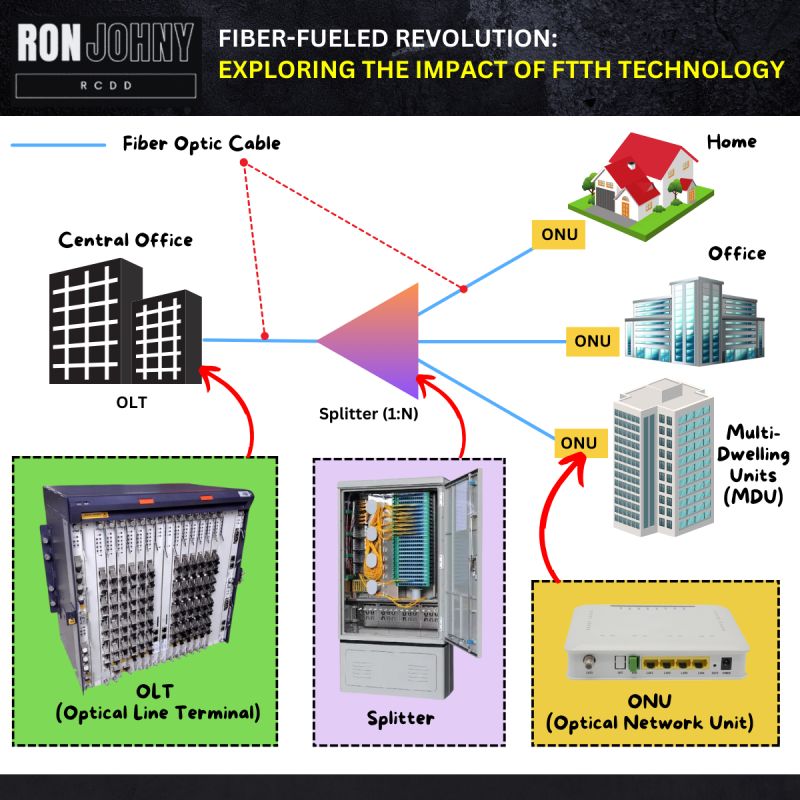
FTTH (Fiber to the Home) technology
FTTH (Fiber to the Home) technology revolutionizes internet connectivity by delivering ultra-fast speeds and unparalleled reliability directly to households. FTTH networks utilize fiber optic cables to transmit data, offering significantly higher transmission rates compared to traditional cable modems or DSL. Fiber optic technology enables efficient data transmission with lower energy consumption, making FTTH a sustainable and eco-friendly choice.
⭕ PON Architecture:
Most FTTH networks are built on Passive Optical Network (PON) architectures. PON utilizes passive components like splitters instead of active components such as amplifiers or repeaters, reducing complexity and maintenance requirements.
Components of PON in FTTH Networks:
✅ OLT (Optical Line Terminal): This equipment is located at the service provider’s central office and is connected to the fiber backbone, managing and controlling the data traffic in the network.
✅ ONU (Optical Network Unit): Installed at the end-user’s premises, the ONU serves as the interface between the FTTH network and the user’s devices, converting optical signals into electrical signals.
✅ Splitter: A passive optical device, the splitter facilitates multiple optical connections to customers, enabling efficient distribution of signals without the need for active components.
⏹ Advantages of FTTH:
1️⃣ Blazing Fast Speeds: FTTH offers speeds 20 to 100 times faster than traditional cable modems or DSL connections, enabling seamless streaming, gaming, and downloading.
2️⃣ Easy Installation and Lower Cost: Fiber optic cables are lightweight and flexible, making installation easier and more cost-effective compared to laying traditional copper cables.
3️⃣ Long-Distance Transmission: Fiber optic signals can travel longer distances without degradation, making FTTH suitable for rural areas and remote locations.
4️⃣ Immunity to Electromagnetic Interference (EMI): Unlike copper-based connections, fiber optics are not susceptible to EMI, ensuring reliable performance even in environments with high electrical interference.
Overall, FTTH technology offers unparalleled speed, reliability, and scalability, making it the preferred choice for modern broadband connectivity. Its combination of high performance, energy efficiency, and ease of installation positions FTTH as a cornerstone of the digital future.
Disclaimer – This post has only been shared for an educational and knowledge-sharing purpose related to Technologies. Information was obtained from the source above source. All rights and credits are reserved for the respective owner(s).
Keep learning and keep growing
Source: LinkedIn
Credits: Mr. Ron Michael Johny, RCDD








